It’s the morning of August 7, 1983. The place is Dallas-Fort Worth International Airport.
Thunderstorms are passing through the area – including one that lingers over the airport at 9 a.m.
Less than 12 hours earlier, the Dallas Cowboys had rallied to beat the Miami Dolphins in a preseason game at Texas Stadium.
A last-second touchdown by players who would not make the team a few weeks later provided the 20-17 victory.
I was at that game that Saturday night. The next morning I boarded a plane to fly home.
As we started down the runway I looked out the window and spotted a unique plane parked among a flock of grounded Braniff International Airways planes.
Braniff had ceased operations in 1982. They had a lot of planes parked in a lot of airports while they sorted out what to do with them.
This one caught my attention. This is why.

Built by Boeing in 1978, the 727-227 jet entered service with the tail number: N457BN. It was promptly delivered to Braniff and went into service on June 13, 1978.
This photo was taken by Steve Vinciguerra, who was a Braniff flight attendant in the mid 1970’s. He took it while working on another 727 heading for a nearby gate.
Braniff had flown the Cowboys around to many of their games over the years prior to the airline shutting down.
So why not paint one of their planes – which ran a gamut of color schemes of orange, red, blue, black, and green – in the Cowboys’ colors and slap the helmet on the tail?
It was the only time I ever saw the plane in person. By the time I next flew back into DFW in November of that year, it and the other Braniff’s planes were gone.
Over the years I wondered what had become of that plane.
I snapped a photo of it – not the one above – but you try to get a clear photo inside a plane barreling down a runway at over 100 miles an hour in dark conditions during a thunderstorm.
Yeah, it didn’t turn out so good.
Fortunately, there were better photos to be found online. Which yielded the all-important tail number.
With that little bit of data, we can track any aircraft.
The hunt was on. And the ultimate fate of the Cowboys’ plane was not what I expected.
Delivering Packages Instead Of Players
According to a representative of Braniff International — in a response in the comments section below after this post was first published — the Cowboys’ plane left the Braniff fleet in the late 1980s.
The original version of this post had the plane leaving Braniff in 1984 — per a website that tracks commercial aircraft.
But, per Braniff International, the plane did spend a few more years in the Braniff fleet after the company resumed operations before going to FedEx.
It would get a new paint job, and a new tail number. It would also change from being a passenger jet, to a cargo jet.
For the next few years, as tail number N481FE, it was part of FedEx’s fleet of aircraft.
It left the FedEx fleet in the 1990s. But it retained its FedEx paint scheme and tail number until 2014.
It turned up at an airshow at Travis Air Force Base in 1998.
Photographer Bill Abbott snapped this photo of the plane and graciously granted permission for me to share it here.

An End And A New Beginning
In 2014, the plane was stripped of its FedEx markings but retained the blue and white paint scheme. It was parked at Los Angeles International Airport.
But that wasn’t the end of its journey.
TAG Aviation purchased the plane and had it ferried to Lasham Airfield in England in that same year. It was also assigned a new tail number: N727EL.
And there it stayed parked, on display, with a few other aircraft at the field.

In 2018 they began dismantling the plane, salvaging her parts to be used as replacements for two other 727-227s that are still in service today.
Registered as G-OSRA and G-OSRB, the two 727s are used to respond to – and help clean up — oil spills around the world.

Both of those planes are also ex-FedEx planes as well, making the old Cowboys’ plane a perfect match for needed parts.
While the original plane is no longer intact, parts of it are still in the air.
When I started looking for it, I had hoped to find it still intact and with the Cowboys paint scheme it began service with.
It was disappointing to find it wasn’t a museum piece somewhere – like Air Force One at the Reagan Library – that you could take a tour inside.
But, in an odd sort of way, its nice knowing parts of it are still up there somewhere. While it isn’t delivering football players to win games it still delivering wins in a way.
Nothing lasts forever, right.
Except maybe a legacy.
From winning football teams to keeping an accident from becoming a disaster. I’d call that a pretty good legacy.
Better still, it seems that a little more than 40 years after we crossed paths, we’re both still around.



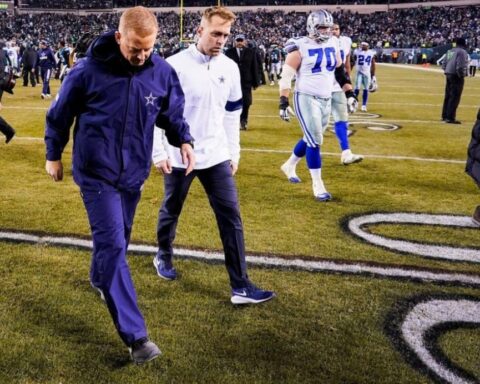
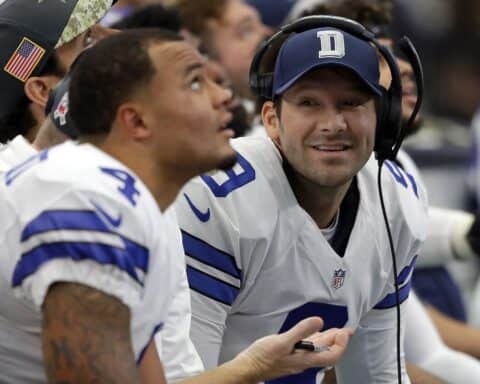
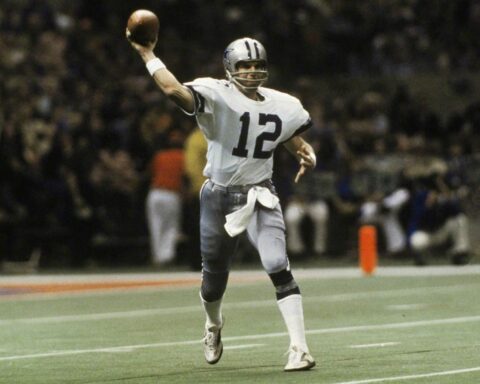
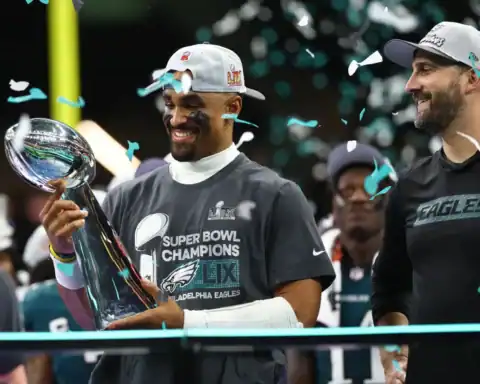

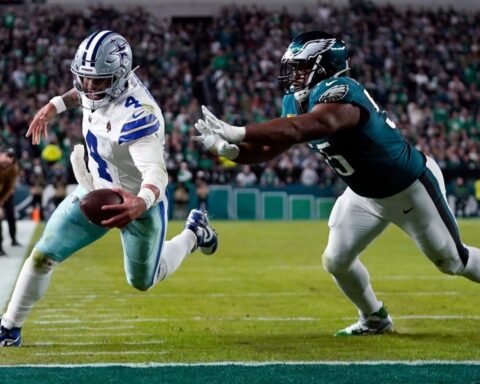


I took that picture in your article
of the Cowboy plane at the gate at DFW
I found it online but there was no attribution with it to it as to who took it. It was a nice shot.
Thank you so much for the wonderful article honoring our venerable Boeing 727-227 Advanced registered as N457BN. On December 18, 1981, this aircraft was christened by Braniff and The Cowboys as their official aircraft for their out of town games. A special plaque to honor the special aircraft and The Cowboys was placed on the wall of the main entrance door. After cessation of operations on May 12 and 13, 1982, the aircraft was remanded to the BRNF Liquidating Trust, the Trust that oversaw disposition of Braniff’s aircraft throughout the reorganization process. On December 15, 1983, the jet was leased by BRNF Trust to Braniff, Inc., the newly reorganized Braniff International, which emerged from bankruptcy on this date. The jet began regularly scheduled service with Braniff, Inc., on March 1, 1984, and it remained with the company until it ceased air operations in November 1989. In early 1990, it was returned to BRNF Liquidating Trust.
Jessica Martin
Vice President Sales
Braniff International
Glad to hear it got five more years as a passenger jet, even if it wasn’t serving as the Cowboys’ plane any longer. Thanks for the update. The data I found online seemed to indicate it went to FedEx much earlier than 1989.